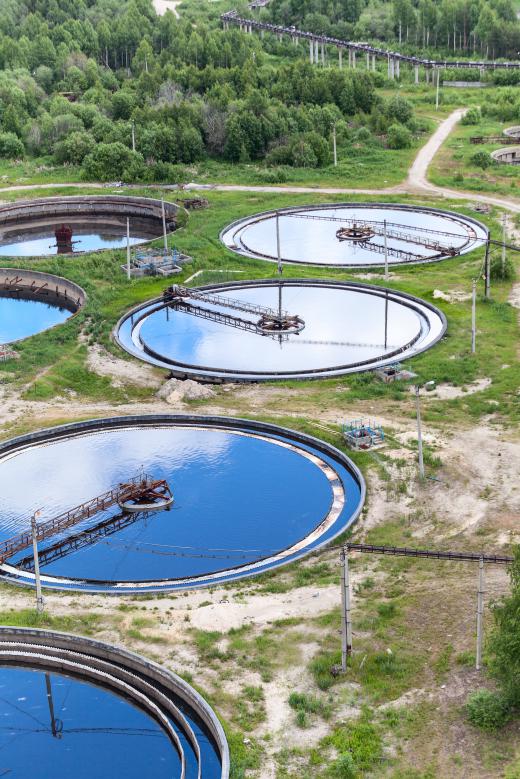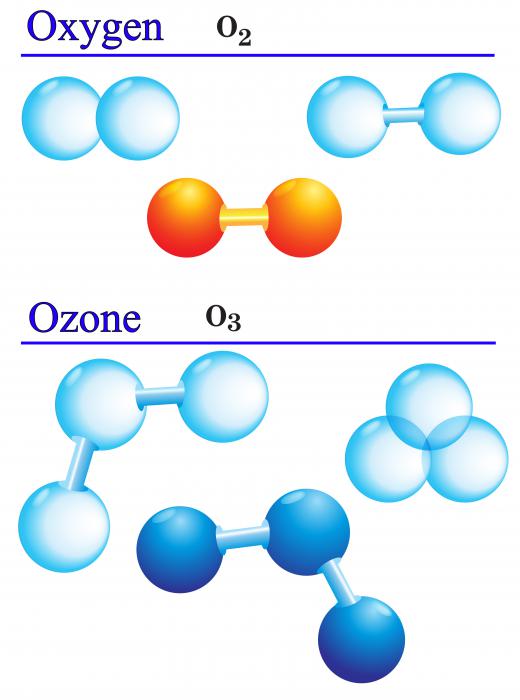What is Chemical Wastewater Treatment?
Chemical wastewater treatment is an intricate industrial process that is employed to remove harmful substances and bacteria from raw sewage and rainwater runoff. Wastewater treatment facilities filter used, dirty water so that it can be recycled back into natural and artificial water sources. Numerous chemicals are used in different phases of the filtration process to separate out solids, kill bacteria and parasites, and remove dangerous toxins. Chemical compounds of ferric chloride, alum, ozone, chlorine, and lime help to purify even the most polluted concentrations of sewage. After wastewater has been filtered, disinfected, and neutralized, it no longer poses an environmental threat and is deemed safe for public use and consumption.
A treatment plant usually controls various physical filtration processes before employing chemical wastewater treatment. Large centrifuges separate most of the sludge and oils from sewage by spinning a tank, and a series of sieves eliminate most remaining solids. After these physical processes, chemicals are added to coagulate small particles and bring them to the surface of a tank. Ferric chloride and alum are popular coagulating agents that combine with toxic particles and form a new, insoluble sludge. The material creates a film on the top of the tank, which can be scraped away using a specialized mechanical collection tool.

Once all noticeable solids have been removed, additional chemical wastewater treatment processes are used to disinfect the water tank through oxidation. Licensed plant operators add solutions of chlorine or ozone to kill harmful bacteria, fungi, and parasites. Chlorine and ozone work by creating an oxygen-rich environment that prevents microorganisms from reproducing, thriving, and colonizing. Depending on the size of a tank and the number of bacteria and parasites present, the chemical wastewater treatment process can take anywhere from a few hours to an entire week.

A final important chemical wastewater treatment technique involves neutralizing the acid content of the water. Pure water is deemed neutral on the pH scale, with a measure of seven. Acidic wastewater typically has a pH value lower than seven, and must be made more basic through chemical processes. Very specific amounts of basic chemicals are added to acidic tanks in order to neutralize the contents. Lime is the most commonly used base, as it is easy for specialists to measure just how much to add. Quality control professionals test the final pH of treated tanks to make sure they are neutral before releasing water back into public water sources.
AS FEATURED ON:
AS FEATURED ON:













Discussion Comments
Just the other day, I read an article about the water shortage in developing countries. It is shocking, but 1 in 6 people in developing countries don't have regular access to clean drinking water. This is especially true in Africa and Asia.
The population of Africa and Asia are starting to move from farming areas to the cities. The wastewater reuse programs need to be revamped to assure proper procedures to maintain clean water sources. Enough water for all is one of our most important environmental challenges.
This process is pretty amazing. To tell you the truth, I never knew that they could process dirty, contaminated water into water that is fit for human consumption. All those chemicals and all the steps that are needed to make the water pure and containing the correct pH.
Now that I think a little more about it, we don't really have a choice, no matter how much it costs. We have a finite amount of fresh water on this earth. If we don't use methods to clean and recycle our water, there won't be enough water for all our needs.
Post your comments